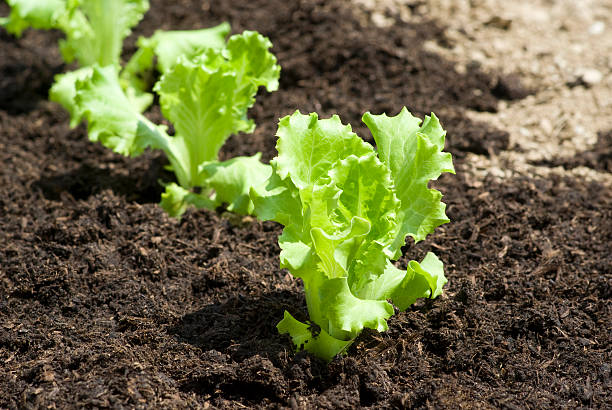Growing Lettuce: Crispy Greens for Your Garden

Summary:
- Varieties: Butterhead, romaine, loose-leaf, and crisphead are common types.
- Sunlight: Prefers partial shade to full sun, especially in hotter climates.
- Soil: Well-draining, fertile soil with a slightly acidic to neutral pH.
- Watering: Requires consistent moisture; avoid overwatering to prevent issues.
- Time to Harvest: Varies by variety, typically 30-70 days from planting to harvest.
Introduction:
Lettuce, a cool-weather vegetable loved for its crisp texture and versatility in salads and sandwiches, is a garden favorite. With various types to choose from, it's an ideal addition to any home garden.
Plant Type and Time to Harvest:
Lettuce encompasses several types: butterhead, romaine, loose-leaf, and crisphead. Each type offers distinct shapes, colors, and flavors. Harvesting time ranges from 30 to 70 days, depending on the variety.
Planting Details:
Sow lettuce seeds directly into well-prepared soil or start seedlings indoors, transplanting them outdoors after a few weeks. Plant seeds 1/4 to 1/2 inch deep, or follow packet instructions for seedlings.
Plant Care:
Ensure even watering, maintaining soil moisture without waterlogging. Mulching helps retain moisture and keep the roots cool. In warmer climates, partial shade or shade cloth can prevent bolting, especially for heat-sensitive varieties.
Pest and Disease Management:
Lettuce may face issues like aphids, slugs, or mildew. Regularly inspect leaves and use organic remedies like neem oil or diatomaceous earth for pest control. Good airflow and spacing help prevent diseases.
Harvesting:
Harvest lettuce leaves when they reach the desired size, usually before they bolt or become bitter. For loose-leaf varieties, pick outer leaves, allowing the inner leaves to continue growing. Cut rather than pull to encourage regrowth.
Storage and Culinary Use:
Consume freshly harvested lettuce within a few days for the best taste and nutrition. Store unwashed leaves in a plastic bag with a paper towel to absorb excess moisture, keeping them crisp in the refrigerator.
Conclusion:
Growing lettuce is an accessible and rewarding endeavor, providing a continuous supply of fresh, crunchy greens for your meals. By understanding planting techniques, care requirements, and harvesting methods, you'll relish the flavors of homegrown lettuce in your culinary creations.
Sow the seeds of your lettuce-growing journey and relish the bounty of delicious, homegrown greens!

